
Overview
This article presents ten ecommerce conversion rate optimization (CRO) services that can significantly enhance the profitability of direct-to-consumer (DTC) brands. By implementing strategies such as:
- User session recordings
- Competitor analysis
- Personalized recommendations
brands can achieve improved conversion rates and heightened customer retention. This, in turn, maximizes profitability in an increasingly competitive ecommerce landscape.
The importance of these CRO services cannot be overstated. With the right tools and strategies, DTC brands can not only attract more customers but also ensure that these customers remain loyal. For instance, user session recordings provide invaluable insights into customer behavior, allowing brands to tailor their offerings to meet specific needs. Similarly, competitor analysis equips brands with the knowledge to stay ahead in the market, while personalized recommendations enhance the shopping experience, fostering a deeper connection with consumers.
In conclusion, the integration of these CRO services is essential for DTC brands aiming to thrive in a competitive environment. By focusing on these strategies, brands can drive conversion rates and secure long-term profitability, ensuring a robust presence in the ecommerce sector.
Introduction
The rapid expansion of the global eCommerce market, projected to reach a staggering $8.1 trillion by 2026, underscores the critical importance of conversion rate optimization (CRO) for direct-to-consumer (DTC) brands. This article delves into ten essential CRO services that can significantly enhance profitability and customer retention for these businesses. However, with numerous strategies available, brands must discern the most effective methods to boost their conversion rates and distinguish themselves in an intensely competitive landscape.
Parah Group: Comprehensive CRO Services for DTC Brands
Parah Group provides a robust suite of ecommerce CRO services specifically tailored for direct-to-consumer (DTC) businesses. Their strategic approach encompasses a diverse array of tactics, including:
- User session recordings
- Competitor analysis
- Persuasive copywriting
- Continuous A/B testing
This comprehensive methodology guarantees that every facet of a client's marketing strategy is meticulously refined for optimal profitability. By emphasizing high-velocity CRO programs, Parah Group empowers companies to unlock substantial growth potential without incurring additional advertising expenses. This strategic emphasis not only enhances conversion rates but also cultivates sustainable success, positioning Parah Group as an indispensable partner for DTC companies striving to thrive in a competitive marketplace.
With the global eCommerce market anticipated to reach $8.1 trillion by 2026, the significance of is paramount, as these services directly correlate with heightened profitability and improved customer retention.
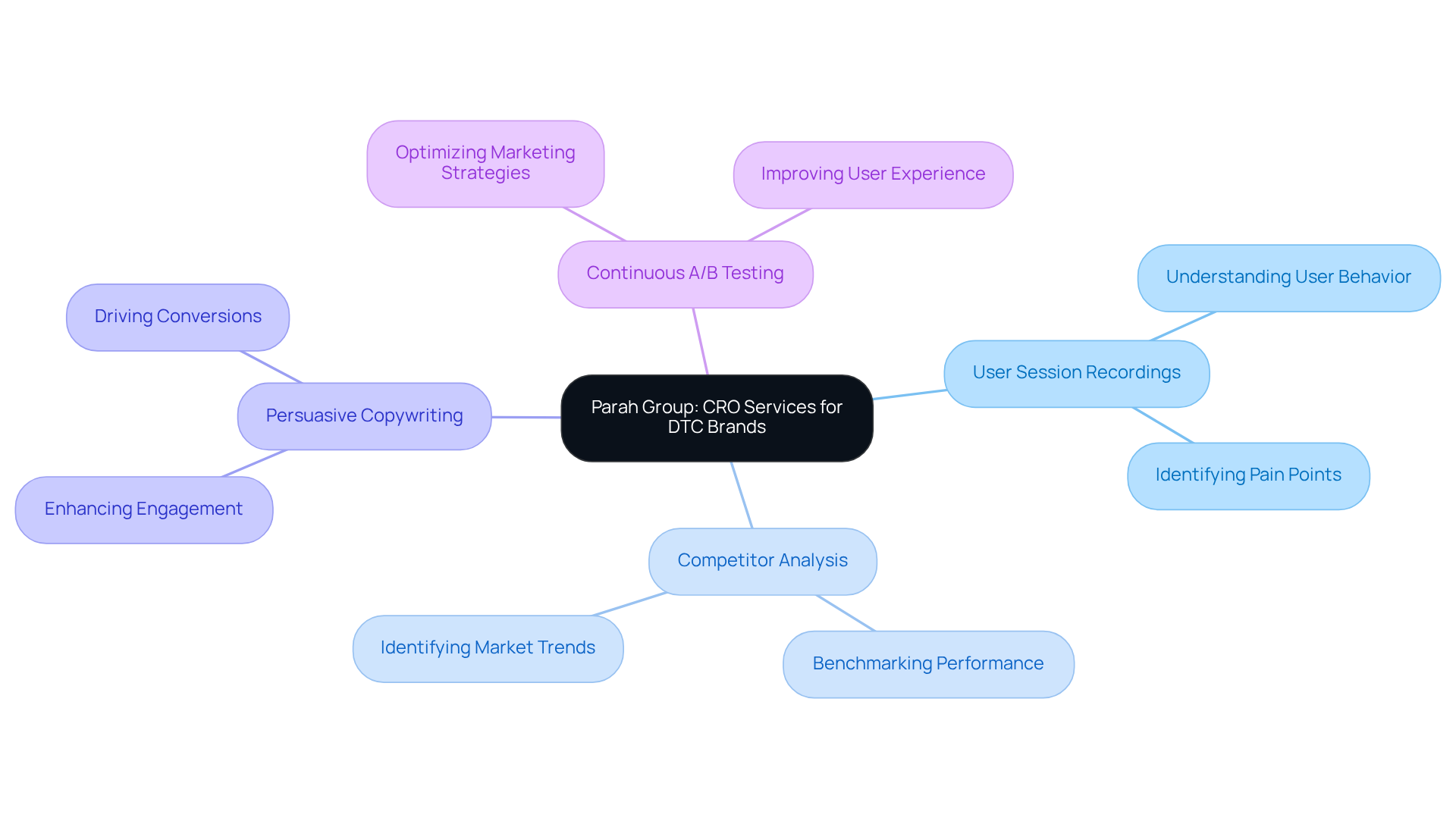
User Session Recordings: Analyze Customer Behavior to Enhance UX
User serve as a formidable asset for companies aiming to observe real-time interactions of visitors on their websites. By meticulously analyzing these recordings, businesses can uncover prevalent navigation challenges, discern user preferences, and identify critical areas for enhancement. This data-driven approach significantly elevates the overall user experience (UX), which is crucial for boosting conversion rates.
For instance, if a substantial proportion of users abandon their carts at a specific stage, brands can delve into the recordings to pinpoint and address the underlying reasons, effectively reducing abandonment instances. Given that the average cart abandonment rate in ecommerce hovers around 70.19%, leveraging ecommerce CRO services to optimize these touchpoints is vital for enhancing profitability.
As UX specialists assert, understanding customer behavior through session recordings is essential for crafting a seamless shopping experience that cultivates trust and drives conversions, especially with ecommerce CRO services.
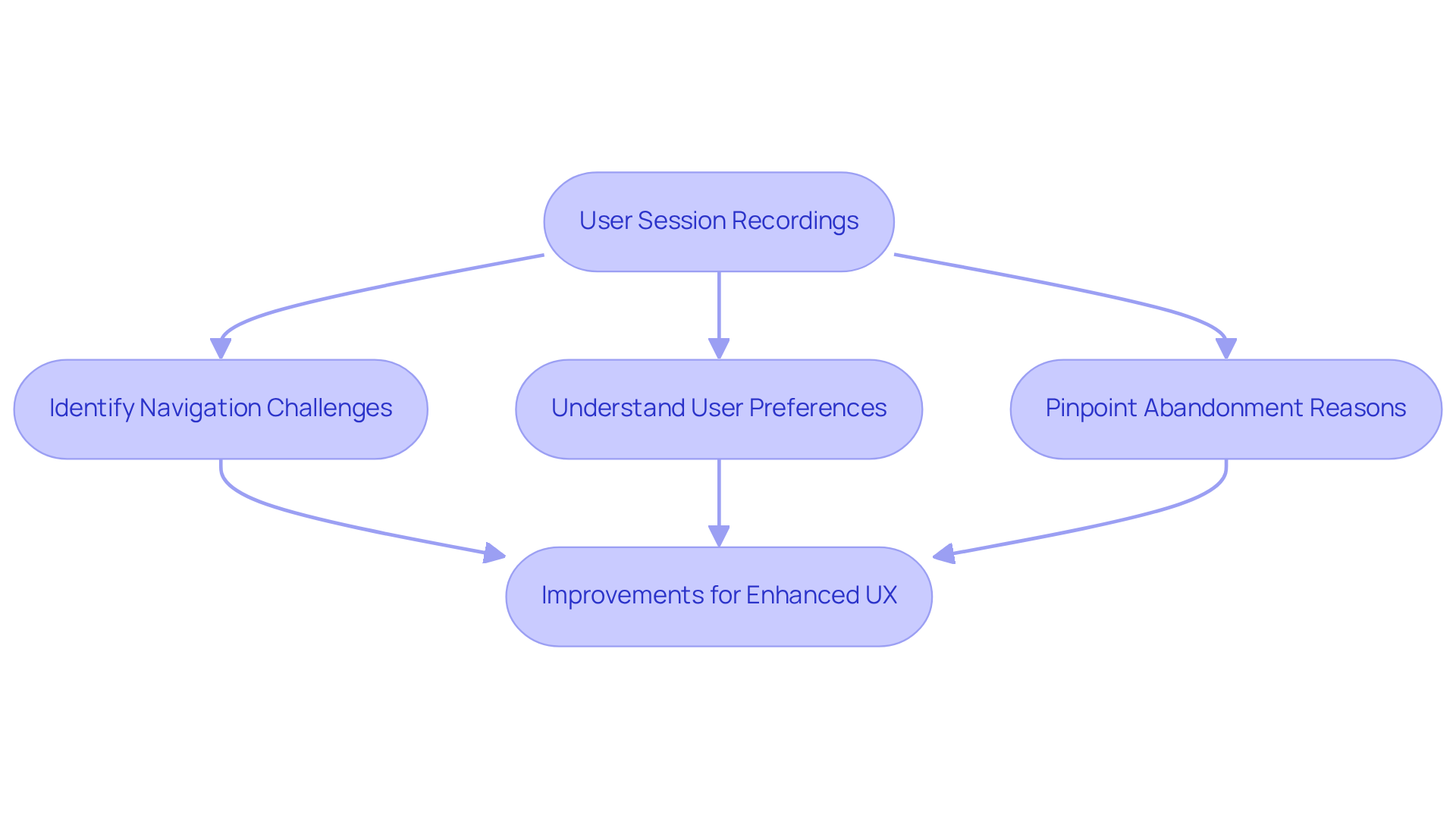
Competitor Analysis: Gain Insights to Outperform Rivals
Conducting a thorough competitor analysis is essential for DTC companies aiming to navigate the competitive ecommerce landscape effectively. By scrutinizing the strengths and weaknesses of competitors, companies can uncover market gaps and identify unique opportunities for differentiation. This analysis should encompass several key elements, such as:
For example, understanding how competitors position their products can significantly inform pricing decisions that enhance market share. Companies that leverage insights from competitor analysis can gain substantial advantages; those that adapt their strategies based on real-time data often experience a remarkable 34% increase in customer retention compared to those that do not. By refining their tactics in response to competitor insights, DTC companies can not only surpass rivals but also cultivate stronger connections with consumers, ultimately driving profitability and growth in 2025 and beyond.

Conversion Copywriting: Craft Compelling Messages that Convert
Conversion copywriting is pivotal in crafting persuasive messages that resonate with prospective clients. By leveraging insights from consumer psychology, it enhances the effectiveness of communication. Understanding the and desires is essential; this knowledge allows for the creation of messages that address these aspects directly.
Employing compelling language and clear calls to action can significantly elevate a company's success in reaching its objectives. For example, a meticulously crafted product description that emphasizes benefits over mere features can lead to heightened sales and increased customer engagement.
At Parah Group, we advocate for a comprehensive approach to ecommerce cro services, ensuring that your messaging aligns seamlessly with your overarching growth strategies. This alignment ultimately drives substantial growth and enhances conversion rates for your business.
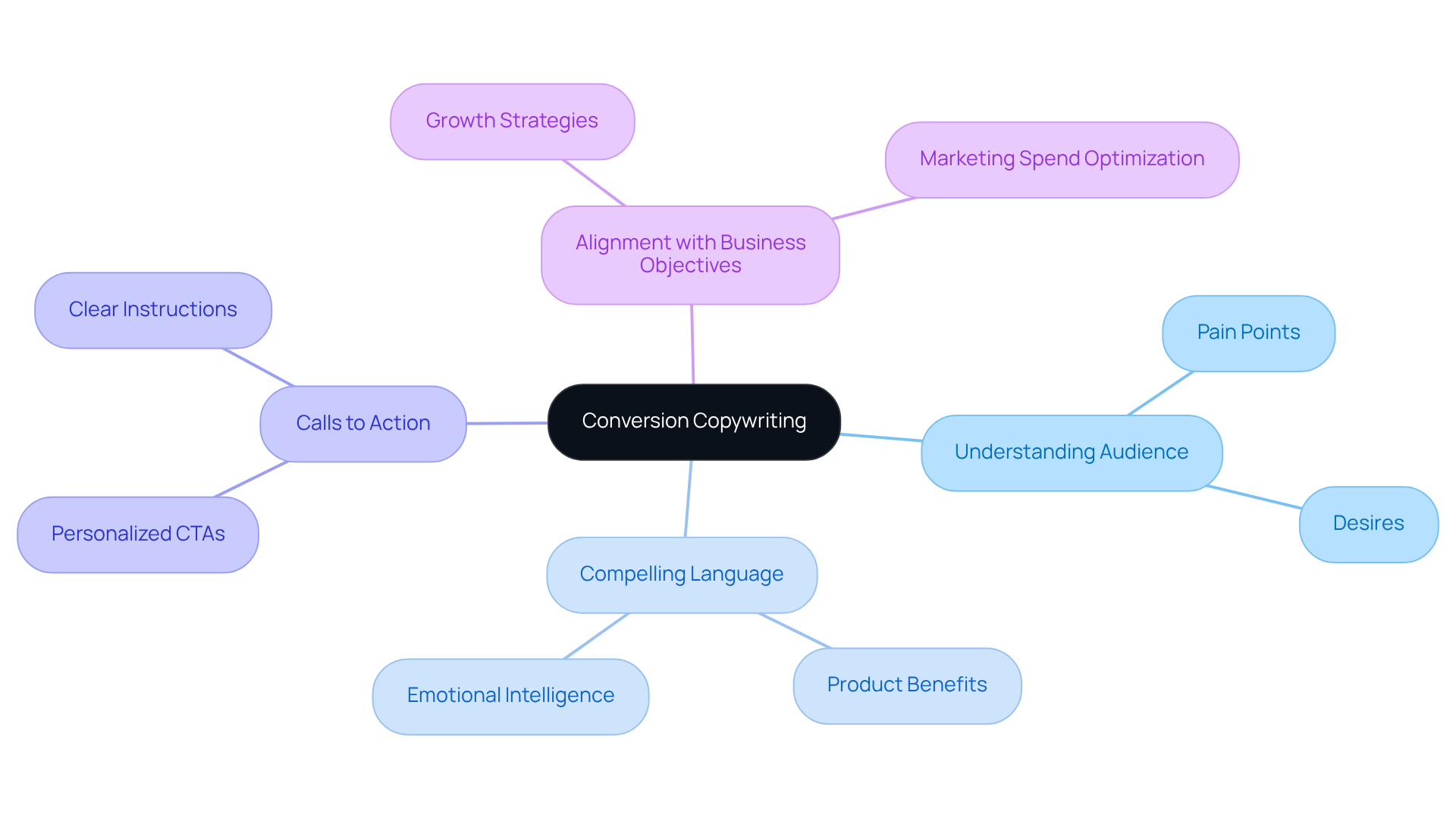
UI/UX Design: Create Intuitive Interfaces for Better Engagement
UI/UX design is crucial in shaping user perceptions and interactions with websites. A thoughtfully designed interface that prioritizes intuitiveness and user-friendliness can significantly boost user engagement. This encompasses optimizing navigation, ensuring mobile responsiveness, and crafting visually appealing layouts. For instance, 74% of visitors are more likely to return to a site with exceptional mobile UX, underscoring the imperative for companies to adapt their designs for mobile users, who accounted for 63% of online orders in Q1 2023. By focusing on user-centric design principles, ecommerce cro services can help companies create a seamless experience that encourages visitors to delve deeper and ultimately convert.
Parah Group's case studies illustrate the transformative impact of effective UI/UX design on key success metrics. For example, a $30M apparel company experienced a 35% increase in conversion rates following a homepage redesign that emphasized social proof and reviews, optimized product pricing, and minimized unnecessary pop-ups. These modifications directly applied user-centric design principles to elevate the overall shopping experience through ecommerce cro services. In a similar vein, a cleaning product company enhanced their average order value (AOV) by 80% through strategic design improvements, such as gamifying the purchasing process with a progress bar and introducing bundles to incentivize larger purchases, demonstrating how thoughtful design can propel higher sales.
Research from Forrester reveals that every dollar invested in user experience yields an astonishing return of $100, highlighting the financial advantages of prioritizing effective design. Additionally, companies that adopt top design practices experience growth at double the rate of their industry peers, showcasing the competitive edge gained from investing in high-quality UI/UX design. Ultimately, crafting intuitive interfaces transcends mere aesthetics; it is fundamentally about and driving sales through ecommerce cro services.
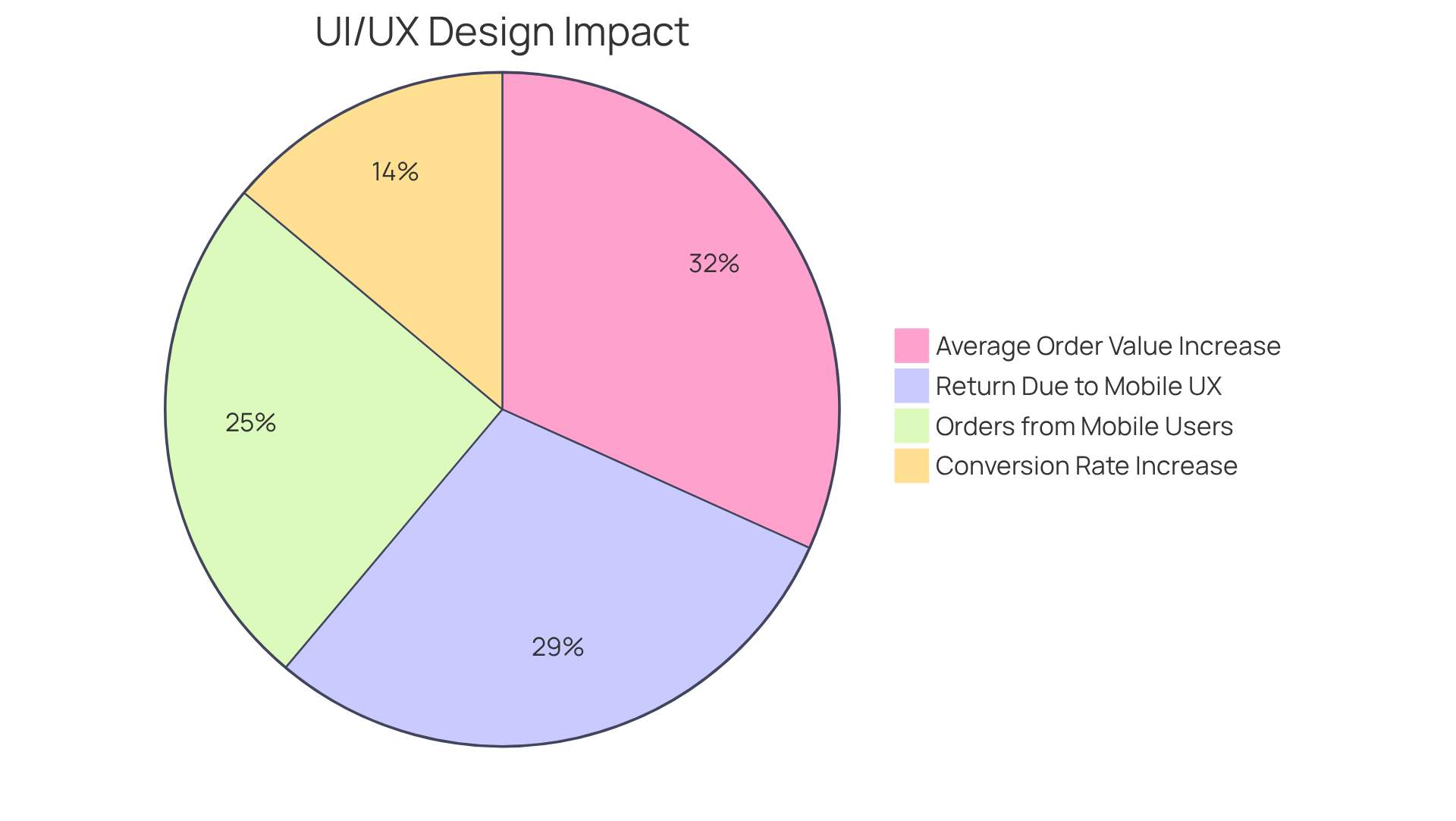
Customer Surveys: Gather Insights to Tailor Your Offerings
Customer surveys serve as an essential instrument for companies seeking direct insights from their users. By posing targeted questions, organizations can pinpoint client preferences, pain points, and avenues for enhancement. This feedback is pivotal in refining product development, optimizing marketing strategies, and elevating client service.
For instance, in our collaboration with a $30M clothing label, we transformed their homepage based on client feedback that underscored the importance of social proof and testimonials. This strategic adjustment, alongside other optimizations, led to a remarkable 35% and a 10% boost in revenue per visitor.
Similarly, when we assisted a $15M cleaning product brand, we integrated a progress bar in the cart slider to enhance the purchasing experience, directly addressing client needs and resulting in an impressive 80% rise in average order value (AOV).
These examples illustrate how responding to client feedback can significantly enhance ecommerce CRO services, ultimately fostering satisfaction and loyalty. In fact, 86% of purchasers are prepared to pay more for an exceptional client experience, highlighting the tangible benefits of leveraging client insights.
Furthermore, companies that prioritize ecommerce CRO services report a 4-8% higher revenue increase compared to their competitors, emphasizing the competitive advantage gained through effective feedback utilization.
By utilizing various forms of experience feedback surveys, such as NPS and CSAT, DTC companies can refine their offerings and cultivate a more personalized shopping experience that resonates with their audience.
Consider implementing regular client surveys to gather insights and adjust your offerings accordingly.
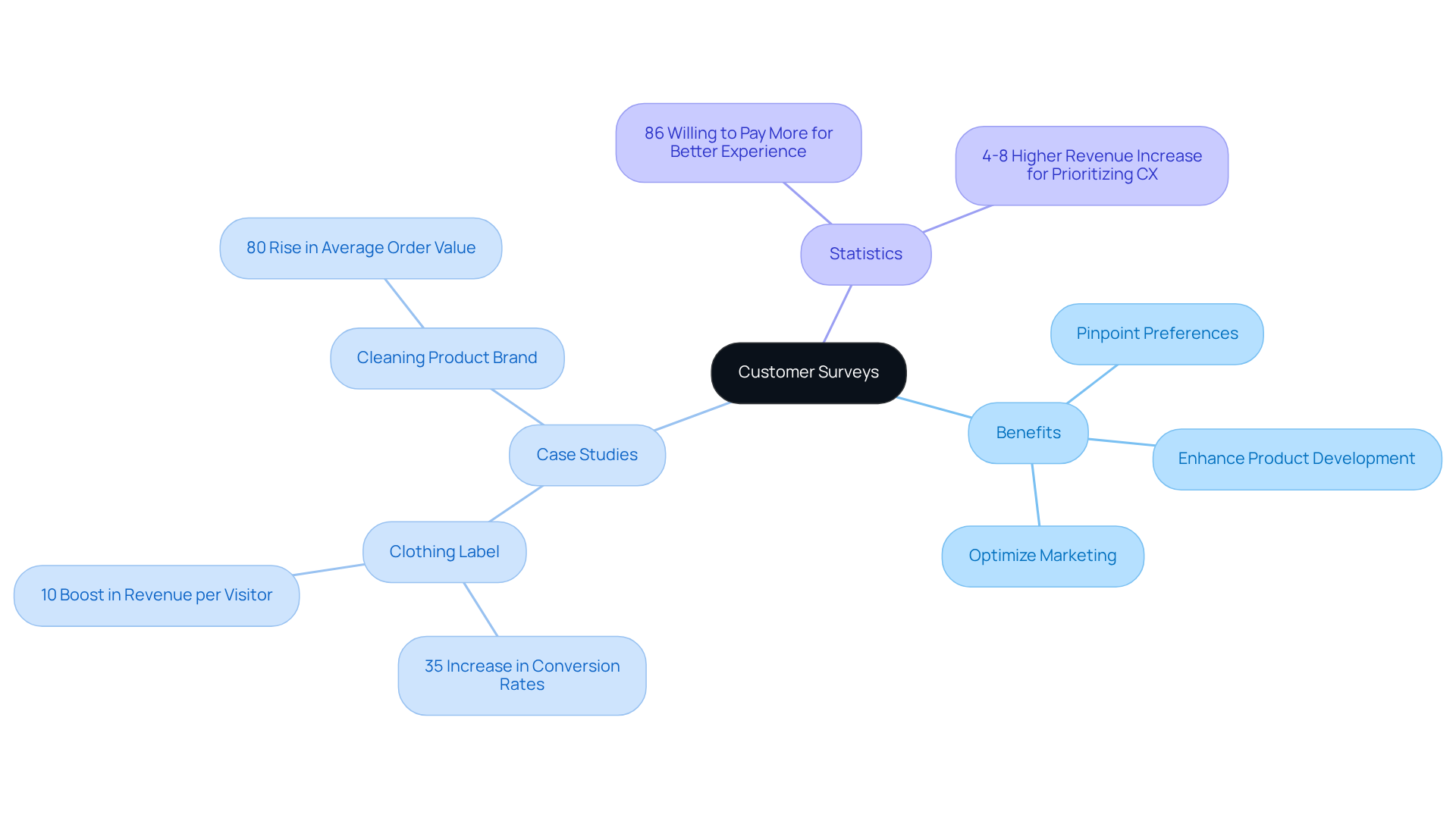
Ongoing A/B Testing: Optimize Strategies Through Data-Driven Decisions
Ongoing A/B testing is essential for refining marketing strategies and enhancing website performance. By systematically testing variations of web pages, emails, or advertisements, companies can identify which elements resonate most effectively with their audience. This iterative approach fosters , ensuring that marketing efforts remain aligned with customer preferences.
For instance, A/B testing different headlines or call-to-action buttons can reveal which variations lead to greater success, empowering companies to enhance their strategies accordingly. Research indicates that even minor adjustments, such as altering a CTA button color, can yield significant increases in conversions; one notable case demonstrated a remarkable 21% boost from a simple color change.
Moreover, considering that nearly 70% of online shopping carts are abandoned before checkout, A/B testing serves to identify and rectify issues contributing to this challenge, ultimately improving sales outcomes. By leveraging insights and adopting a comprehensive approach that aligns paid advertisements with landing pages, brands can enhance their marketing efficiency and achieve sustainable growth by utilizing ecommerce CRO services, maximizing profitability through high-impact conversion optimization strategies.

Checkout Experience Optimization: Streamline Processes to Reduce Abandonment
Enhancing the checkout experience is essential for mitigating cart abandonment, which averages around 70% across e-commerce platforms that implement ecommerce cro services. By utilizing ecommerce cro services to simplify the checkout process—reducing the number of steps and form fields—we can significantly elevate user experience.
Audits of leading e-commerce sites reveal an average of 39 potential areas for ecommerce cro services improvements, demonstrating substantial opportunities for optimization. Additionally, offering a variety of payment methods and providing transparent details about shipping fees and delivery durations through ecommerce cro services can alleviate buyer concerns, fostering trust and confidence in the purchasing process.
Industry specialists emphasize that a mere 1% improvement in cart abandonment rates can lead to a revenue increase of approximately 10%. Establishing a smooth and clear checkout process is crucial for ecommerce cro services, as it not only boosts sales but also enhances overall customer satisfaction.
According to the Baymard Institute, utilizing ecommerce cro services to create a well-designed checkout flow has the potential to yield a 35.26% increase in conversion rates, translating into billions in recoverable lost orders. Therefore, is not just a tactical enhancement; it is a strategic necessity for DTC companies utilizing ecommerce CRO services to thrive in a competitive landscape.
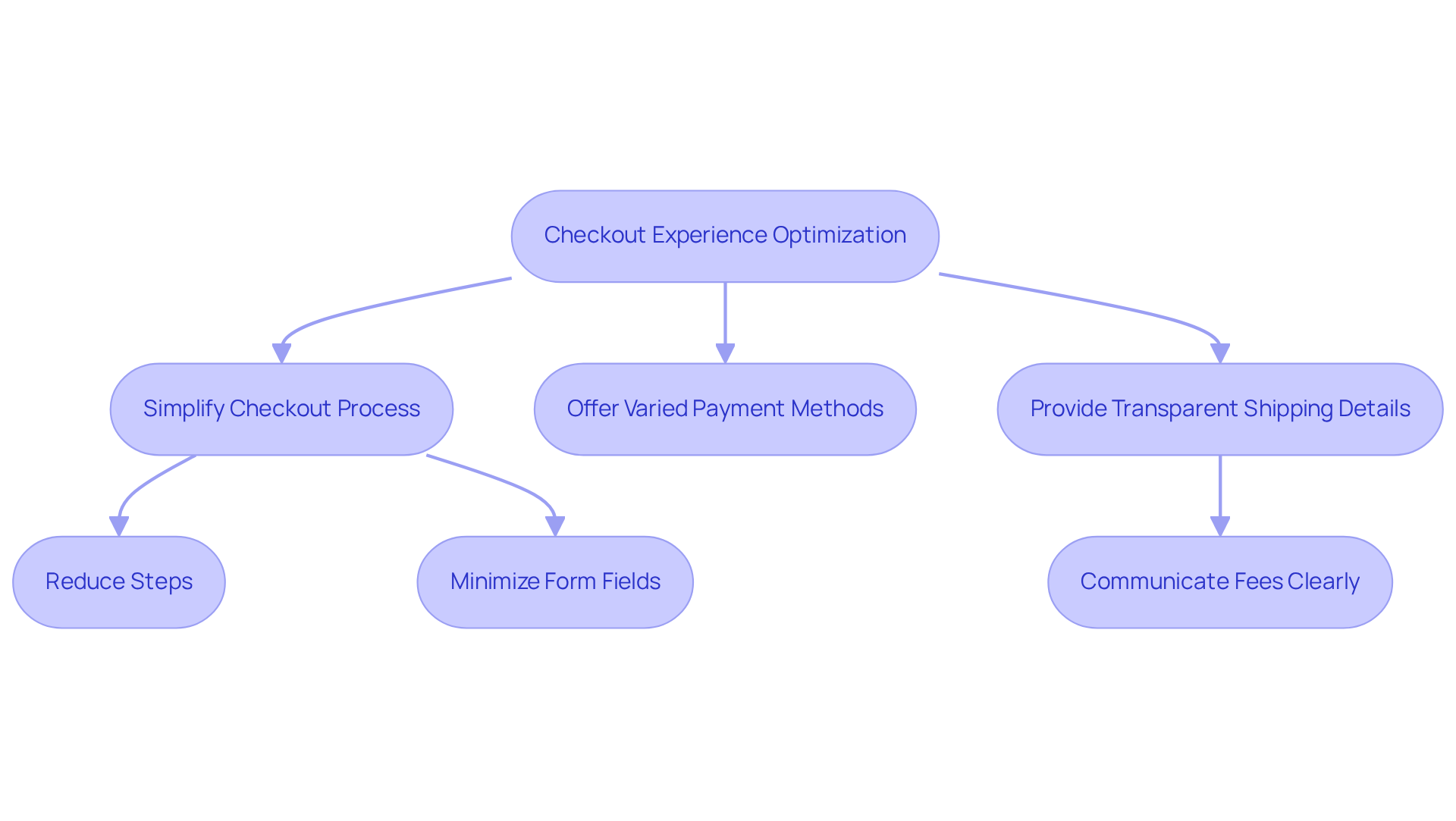
Trust Signals: Build Consumer Confidence to Drive Sales
Incorporating trust signals into a website is essential for establishing consumer confidence. This includes prominently showcasing:
- Security badges
- Client reviews
- Testimonials
By highlighting positive feedback and ensuring that customers feel secure in their transactions, companies can effectively alleviate concerns and encourage purchases. Trust signals serve as , significantly bolstering the company's credibility and enhancing the likelihood of conversion when utilizing ecommerce cro services.
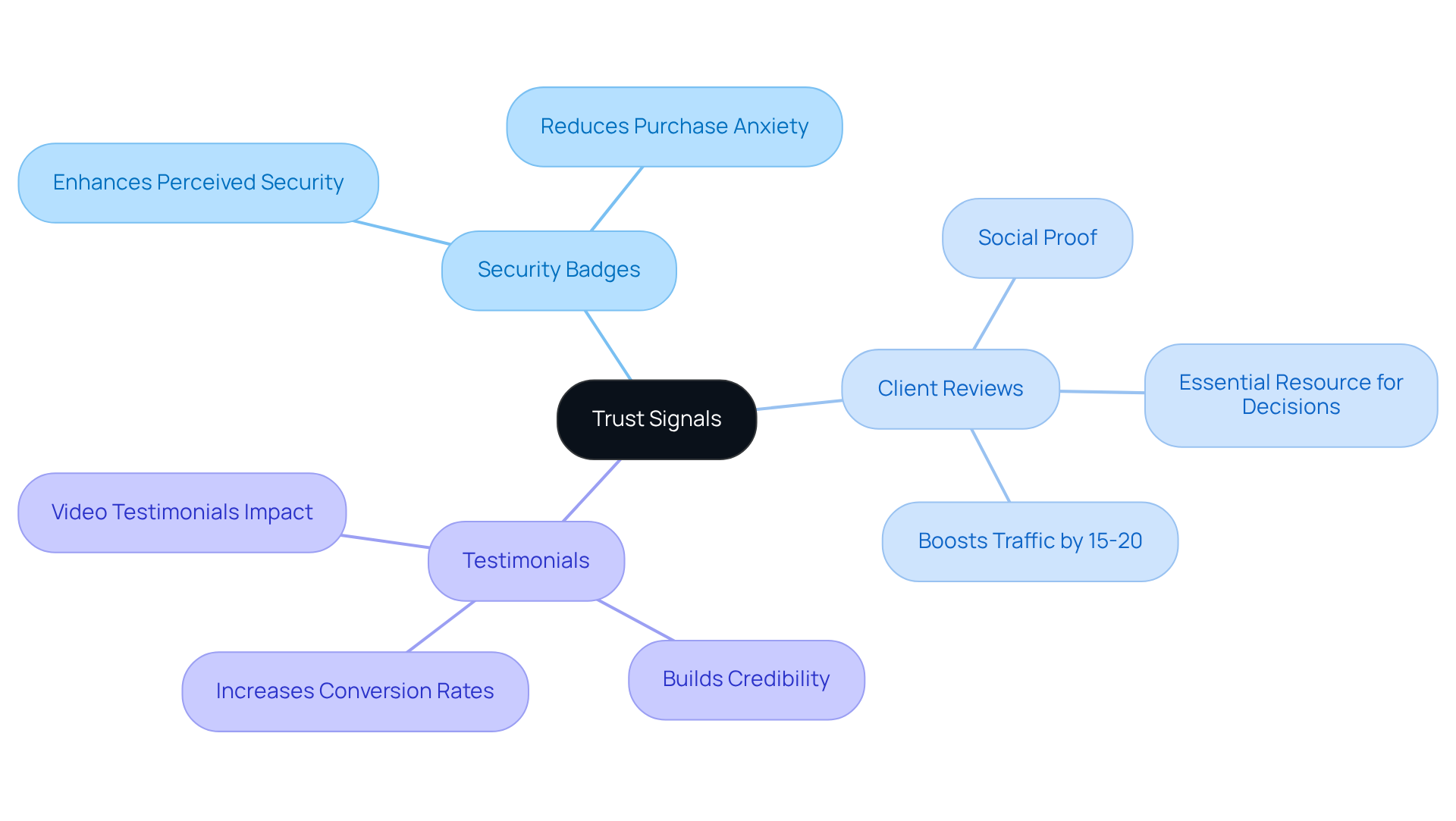
Personalized Recommendations: Enhance User Experience to Boost Sales
Personalized recommendations stand as a pivotal strategy for enhancing user experience and driving sales within ecommerce CRO services. By leveraging data analytics, companies can adeptly suggest products tailored to users' browsing history, preferences, and past purchases. This customized approach not only elevates client satisfaction—evidenced by 52% of consumers reporting greater satisfaction as experiences become more personalized—but also significantly boosts average order values.
For instance, a compelling case study involving a $30M apparel company, Parah Group, illustrates the impact of redesigning the homepage to emphasize social proof and reviews, leading to a remarkable 35% increase in conversion rates and a 10% rise in revenue per visitor. Similarly, another client, Grab Green, adopted bundles and multi-packs, resulting in an impressive 80% increase in average order value, underscoring the effectiveness of personalized strategies.
In fact, a staggering 98% of online retailers indicate that personalization enhances average order value, with 80% of businesses witnessing increased consumer spending—averaging 38% more—when their experiences are personalized. Implementing personalized recommendations as part of ecommerce CRO services cultivates a more engaging shopping experience, ultimately driving substantial increases in overall sales.
To maximize the impact of personalized recommendations, brands must continuously and refine their strategies to align with evolving consumer preferences.

Conclusion
The significance of ecommerce conversion rate optimization (CRO) services for direct-to-consumer (DTC) brands is paramount. By employing targeted strategies such as:
- User session recordings
- Competitor analysis
- Conversion copywriting
businesses can markedly improve their profitability and customer engagement. In a swiftly evolving ecommerce landscape, grasping consumer behavior and preferences is crucial for success.
This article has delved into various CRO services, illustrating their influence on enhancing user experience and driving sales. The advantages of continuous A/B testing and the need for a streamlined checkout process are pivotal, each tactic playing a vital role in minimizing cart abandonment and amplifying conversion rates. Furthermore, the integration of trust signals and personalized recommendations reinforces the correlation between effective CRO practices and increased profitability for DTC brands.
In a competitive environment where consumer expectations soar, investing in comprehensive ecommerce CRO services is indispensable. By emphasizing user-centric strategies and perpetually refining approaches based on data-driven insights, DTC brands can not only elevate their profitability but also cultivate enduring customer loyalty. Adopting these best practices today will set the stage for sustainable growth and triumph in the ecommerce marketplace of tomorrow.
Frequently Asked Questions
What services does Parah Group offer for DTC brands?
Parah Group provides a comprehensive suite of ecommerce conversion rate optimization (CRO) services tailored for direct-to-consumer (DTC) businesses, including user session recordings, competitor analysis, persuasive copywriting, and continuous A/B testing.
How does Parah Group's approach benefit DTC companies?
Their strategic approach focuses on high-velocity CRO programs that enhance conversion rates and promote sustainable growth without incurring additional advertising expenses, ultimately leading to optimal profitability.
Why are user session recordings important for businesses?
User session recordings allow companies to observe real-time interactions on their websites, helping them identify navigation challenges, user preferences, and areas for improvement, which enhances the overall user experience and boosts conversion rates.
What is the significance of analyzing cart abandonment rates?
Given that the average cart abandonment rate in ecommerce is around 70.19%, analyzing user session recordings can help brands understand why users abandon their carts and address those issues, thus reducing abandonment instances and improving profitability.
How does competitor analysis help DTC companies?
Competitor analysis helps DTC companies identify market gaps and unique opportunities by examining competitors' strengths and weaknesses, including their pricing strategies, marketing approaches, and customer engagement techniques.
What are the potential benefits of adapting strategies based on competitor insights?
Companies that adapt their strategies based on insights from competitor analysis can experience a significant increase in customer retention, with those making adjustments seeing a remarkable 34% increase compared to those that do not.
Why is effective ecommerce CRO important in the current market?
With the global eCommerce market projected to reach $8.1 trillion by 2026, effective ecommerce CRO services are crucial as they correlate directly with increased profitability and improved customer retention for DTC brands.
FAQs











